The art of
Fan-carving
Published on: October 15, 2021
Reading time: 6 minutes
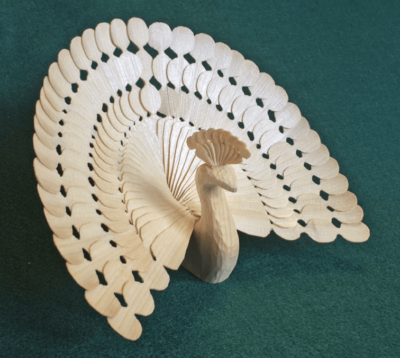
Hi everyone, have you ever heard of fan-carving? I’ll be honest, I have not. I discovered it a few months ago when on the Facebook group of the blog (Showcase woodcarving group) David Nye, a nice gentleman passionate about history, stamps and fan-carving joined: David, who began to show us photos of very special works with very interesting accompanying information.
Struck by his passion and the beauty of the works that he gradually showed us on the group, I started to get interested in this art, unknown to me, and in the author of the masterpieces she shared: Sally Nye.
David and Sally are a fabulous couple, two passionate researchers, two people who devote their free time to making sure this very special art is not lost.
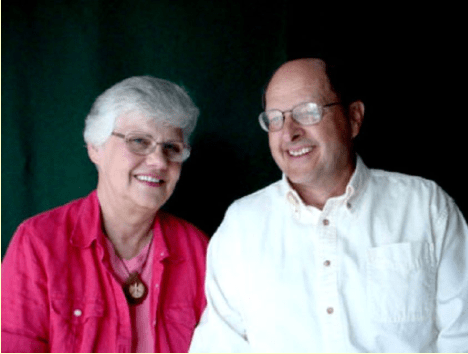
Sally and David Nye
Before I delve deeper into this topic I’m excited and grateful to be able to post the article they wrote for the blog, let’s read it together!
‘A Fan Bird Narrative’ by Sally and David Nye
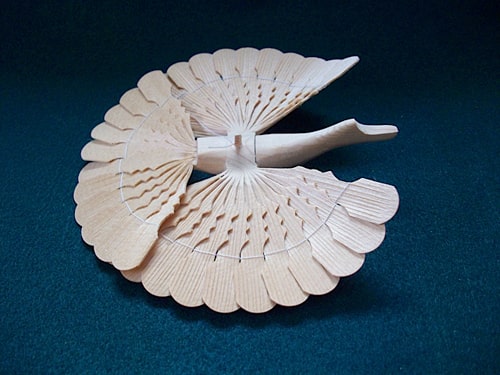
The Legend of the Fan Bird:
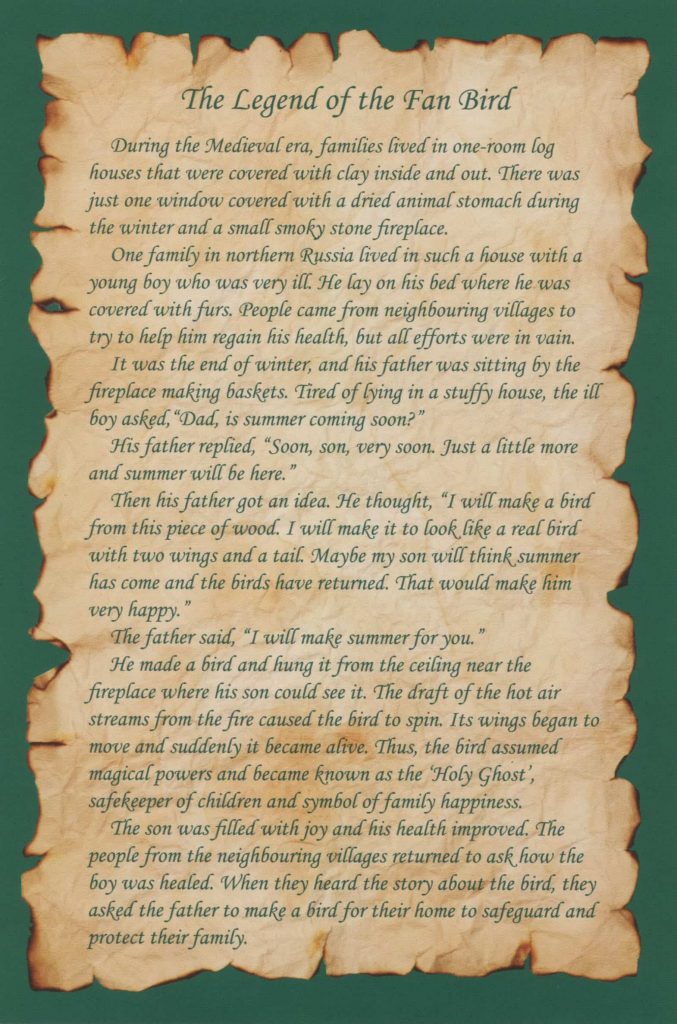
By 1900, the fan bird was so common that two well-known ethnographers, Hammarstadt (Sweden) and Andree (Germany), called it a “cultural phenomenon.”
These wooden birds were found in the churches, government buildings and homes of the peasant folk as well as the elite. This phenomenon extended from the villages of the fertile farmlands to the tiny huts in the mountain ranges (from Greece to Lapland).
It was common to see the Holy Ghost/Spirit in the form of a wooden fan bird dove. Farmers had the fan bird in their private chapels or altars. The dove was also found in the homes suspended above the dining table …as part of the “God-center.”
Note: The God-center seems to be traditional of many European countries and/or regions. It is a place on the wall, in the living/dining area of the home that holds the crucifix and holy pictures. One turns to the God-center before and after mealtime.
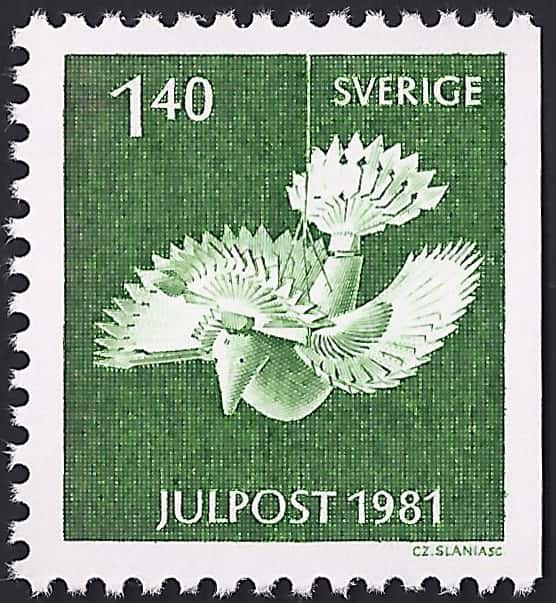
Wooden bird: Christmas issue.
It is a widespread custom in Sweden to hang a bird from the ceiling at Christmas. Originally it was a religious act. The custom comes from the church where a carved wooden dove hangs under the pulpit canopy over the minister’s head. It symbolizes the Holy Ghost.
In the home, it was customary to hang these wooden birds over the table near lighted candles or a stove where the heat would cause the bird to slowly turn ..as if alive.
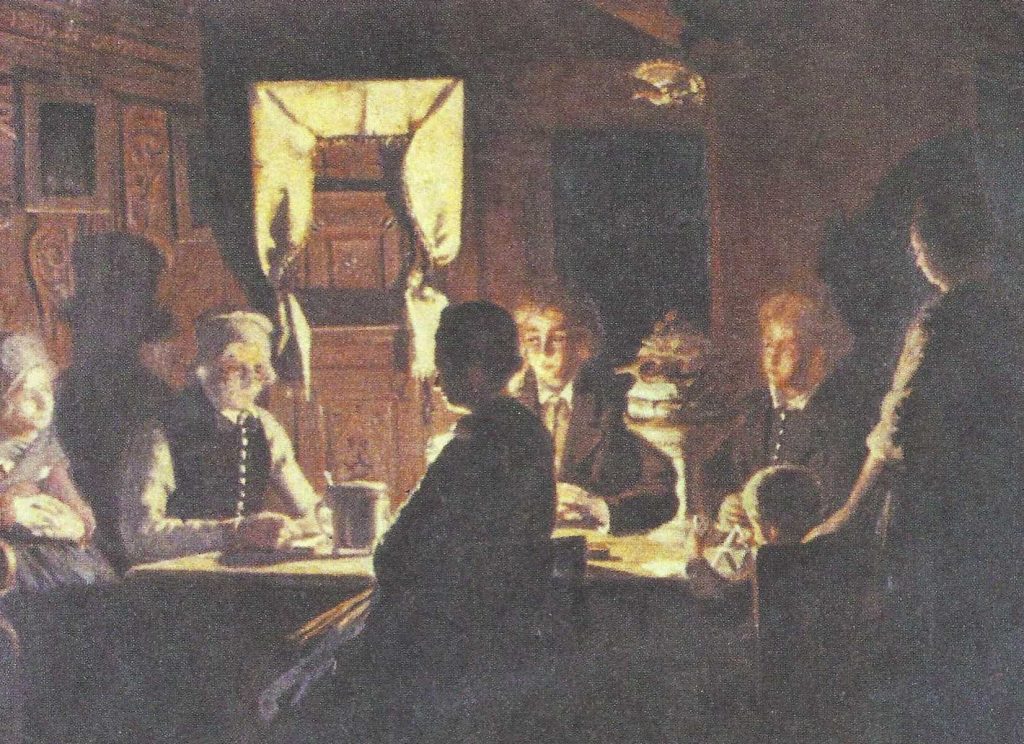
Nordiska Museum, Stockholm, Sweden (Exhibit Nm 118008).
Upon the European continent, the fan bird dove is known by many names: Holy Spirit, Holy Ghost, bird of inspiration, dove-of-peace, ceiling bird, Christmas bird, Christmas dove, dove of baptism, ceiling dove, wooden bird, Karelian cuckoo, etc.
…because of the devastation caused by the World Wars, country borders changing, immigration on the move, etc., fan-carving, along with its rich and meaningful symbolism, almost became lost. It is now enjoying a renaissance.
Due to the fan carvers of today …it will live on.
For further information about fan-carving, explore the website:
https://www.FanCarversWorld.com
Doing research on the internet I have not found references to this art of wood in Italy. The most significant examples are from Russia and Eastern Europe and I find it very bizarre that the greatest experts and exponents, now, come from Michigan in America!
But Sally and David are two very special people! On their youtube channel you can find Sally explaining the rudiments of fan-carving and on their website, one of the most creative and full of historical information I’ve ever consulted, you can enter fully into this particular art of carving.
As well as discovering that Sally is the great-granddaughter of George Michael Schwarz, a German tailor who immigrated to America at the end of the 1800s and who, thanks to the economic boom, was able to build a castle between Kelly Lake and Lake Michigan at Laketown, about a mile south of Macatawa Park, Michigan (U.S.A.).
This castle, in 1900, inspired none other than L. Frank Baum who wrote “The Wizard of Oz” (or at least parts of it) from his summer cottage in Macatawa, Michigan. The castle that Sarolyn (Sally) Nye’s great-grandfather, George Michael Schwarz, built and lived in very briefly is therefore part of the story of OZ! Is the same yellow castle that Baum wrote about!
This particular family history and their passion led Sally and David to rediscover their origins in Germany, in Bavaria, and to become passionate about this particular art and it was a real pleasure for me to discover it through them and to contribute a little to its preservation.
If you have an opportunity to get a piece of white cedar (Thuja Occidentalis) or similar wood, watch their video on preparing the wood on their website (www.FanCarversWorld.com) or follow Sally’s precise advice on how to carve your first fan-bird!
If you want to discover new woodcarving techniques instead, go to the next article in the category! Good health, luck and prosperity to all! 😘
Please note, all material in the article, including photos, are the property of Mr. and Mrs. Nye.
The commentary is by Whittled Lovelies.
Any diffusion should be politely reported and please acknowledge the sources, thank you.
This is an article written by a human for humans!
All articles in the blog are written by me. No contributors, no people paid to write content for me.
Posts written by guests or friends of the blog are marked under the title with the words “guest post.” These are friendly collaborations, contributions to the carving community.
No AI (artificial intelligence) support is employed in the writing of blog articles, and all content is made with the intent to please humans, not search engines.
Do you like my content?
Maybe you can consider a donation in support of the blog!

Click on the button or on the link Ko-fi to access a secure payment method and confidently offer me coffee or whatever you want!
From time to time, in articles, you will find words underlined like this, or buttons with the symbol 🛒. These are links that help deepening, or affiliate links.
If you are interested in a product and buy it suggested by me, again at no extra cost to you, you can help me cover the costs of the blog. It would allow me to be able to give you this and much more in the future, always leaving the content totally free.
